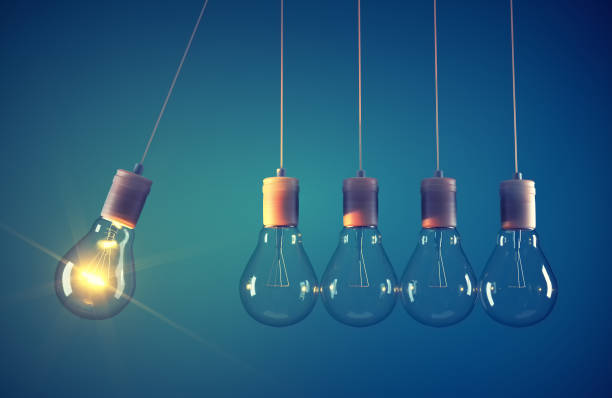
Electricity and magnetism are two fundamental forces in the natural world that are closely interconnected. Understanding how electricity and magnetism work together is essential in comprehending various scientific phenomena and technological advancements.
Understanding Electricity
Electricity refers to the flow of electric charge, typically carried by electrons, through a conductor. It is a versatile form of energy that powers our homes, industries, and technological devices. To comprehend how electricity and magnetism work together, we need to have a basic understanding of electricity itself.
Electricity is governed by certain principles:

Conductors and Insulators
Materials can be classified as conductors or insulators based on their ability to allow the flow of electric charge. Conductors, such as metals, possess free electrons that can move easily, enabling the flow of electricity. Insulators, on the other hand, impede the flow of electrons and restrict the movement of charge.
Electric Charges and Fields

Electric charge exists in two forms: positive and negative. Like charges repel each other, while opposite charges attract. Electric fields are created by electric charges and extend into the surrounding space, exerting forces on other charges within their influence.
Understanding Magnetism
Magnetism, like electricity, is a fundamental force. It is the property of certain materials to attract or repel other materials. To comprehend the relationship between electricity and magnetism, it is crucial to understand the basic principles of magnetism.
Magnetism can be described by the following concepts:

Magnetic Fields and Poles
A magnetic field is a region where the force of magnetism can be detected. It is represented by magnetic field lines that form closed loops around a magnet. Magnets have two poles, known as the North and South poles. Like poles repel each other, while opposite poles attract.
Magnetic Materials
Certain materials, such as iron, nickel, and cobalt, possess the ability to become magnetized. When these materials are in the presence of a magnetic field, their atoms align in a specific way, creating a magnetic effect.
Read More: How to Prepare for Fashion Industry Panel Discussion In 2023
Relationship between Electricity and Magnetism
The relationship between electricity and magnetism is best explained by the concept of electromagnetism. Electromagnetism refers to the interplay between electric and magnetic fields and their influence on each other.
Some key aspects of the relationship between electricity and magnetism are:

Magnetic Field Produced by an Electric Current
When an electric current flows through a conductor, it generates a magnetic field around it. The direction and strength of the magnetic field depend on the direction and magnitude of the current. This principle is employed in devices like solenoids and electromagnets.
Electromagnetic Induction
Electromagnetic induction occurs when a change in magnetic field induces an electric current in a nearby conductor. This phenomenon is the basis of electrical generators and transformers, where the relative motion between magnets and conductors generates electricity or alters voltage levels.
Applications of Electromagnetism:
Electromagnetism finds numerous practical applications in various fields. Electric motors convert electrical energy into mechanical energy, while generators transform mechanical energy into electrical energy. Transformers help transmit electricity efficiently over long distances, and magnetic resonance imaging (MRI) machines use magnetic fields to create detailed medical images. Maglev trains utilize the repulsive forces between magnets to achieve frictionless transportation.
Conclusion
Electricity and magnetism are inseparable forces in the natural world. Understanding their interrelationship enables us to harness their power for practical applications in industries, technology, and everyday life. From electric motors and generators to transformers and MRI machines, the collaboration between electricity and magnetism has revolutionized our world.
FAQs
How are electricity and magnetism related?
Electricity and magnetism are closely related through the concept of electromagnetism. The flow of electric current generates a magnetic field, while a changing magnetic field induces an electric current. This interplay between electric and magnetic fields forms the foundation of electromagnetism.
What are some practical applications of electromagnetism?
Electromagnetism has a wide range of applications. It is used in electric motors, generators, transformers, MRI machines, and maglev trains, to name a few. These applications have revolutionized industries, transportation, and healthcare.
How does an electric motor work?
An electric motor converts electrical energy into mechanical energy. It consists of a coil of wire, known as an armature, placed in a magnetic field. When an electric current flows through the armature, it experiences a force due to the interaction between the current and the magnetic field, causing the armature to rotate.
How does electromagnetic induction occur?
Electromagnetic induction occurs when a changing magnetic field induces an electric current in a nearby conductor. This phenomenon is based on Faraday’s law of electromagnetic induction, which states that the magnitude of the induced current is directly proportional to the rate of change of magnetic field flux through the conductor.
What is the significance of electromagnetism in everyday life?
Electromagnetism plays a vital role in our everyday lives. It powers our homes, enables transportation through electric motors and trains, facilitates medical imaging through MRI machines, and supports communication and technology through generators and transformers. Its applications have greatly improved our quality of life.











